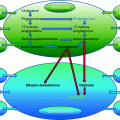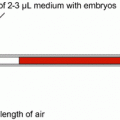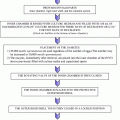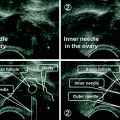© Springer International Publishing AG 2017
Ri-Cheng Chian, Geeta Nargund and Jack Y. J. Huang (eds.)Development of In Vitro Maturation for Human Oocytes10.1007/978-3-319-53454-1_1616. Mild Stimulation Protocol for Poor Ovarian Responders Undergoing IVF
(1)
Department of Gynecology and Obstetrics 1, Physiopathology of Reproduction and IVF Unit, S. Anna Hospital, University of Torino, Via Ventimiglia 3, 10126 Turin, Italy
Keywords
Poor ovarian respondersControlled ovarian stimulationIVFMild stimulationClomiphene citrateAromatase inhibitorsIntroduction
The incidence of poor ovarian responders (PooResp) among infertile women undergoing controlled ovarian stimulation (COS) for in vitro fertilization (IVF) has been estimated at 9–24%, but according to recent reviews, it seems to have slightly increased in the last years [1]. Despite the huge number of trials that have been performed and published in the last two decades with the aim to find more efficient stimulation protocols for the management of PooResp, systematic reviews suggest that we still have insufficient evidence to recommend a specific treatment, the poor ovarian response remaining one of the most challenging tasks in reproductive medicine [2]. Several studies included a too small number of patients, and, above all, an unclear definition of PooResp led to the inclusion in the clinical trials of heterogeneous groups of patients [2]. Although the concept of poor ovarian response was introduced over 30 years ago, we had no clear definition of PooResp until 2011, when the ESHRE Bologna criteria were published [3].
A poor ovarian response to COS could result from the use of a suboptimal COS protocol, and largely more frequently, by the very limited follicular content inside the ovary. Although it is self-evident that “no juice can be obtained by a dry lemon,” the effort of finding at least the best protocol among those available goes on.
The Classical Strategy of COS in PooResp
One of the most extensively employed strategies to get a satisfactory follicular response in PooResp has traditionally involved the use of high doses of gonadotropins [4]. However, conflicting data have been reported on this approach: Some authors [5–7], even if not all [8], did not report the enhanced ovarian response and/or better pregnancy rates when the starting dose of gonadotropins was increased up to 450 IU, in both prospective and retrospective studies. More recently, Berkkanoglu and Ozgur [9] confirmed that the increase in FSH starting dose did not result in higher pregnancy rates and also found no differences in IVF outcome when the starting dose of 300, 450, and 600 IU were compared. PooResp have a reduced ovarian reserve and the recruitable follicles are a few; for this reason, even high gonadotropin amounts can just promote the development of the available follicles receptive to stimulation, and cannot, obviously, manufacture follicles de novo [2].
The Mild Stimulation Strategy for PooResp: Clomiphene Citrate
Mild controlled ovarian stimulation (mCOS), the administration of low doses of exogenous gonadotropins for fewer-than-normal days in a GnRH-antagonist cycle, has been recently proposed as a patient-friendly COS strategy, able to increase the patient’s compliance to IVF without compromising IVF effectiveness. Some oral compounds (such as Clomiphene citrate or aromatase inhibitors) have been proposed to be a suitable alternative to conventional IVF COS not only for women with an adequate ovarian reserve, but also for PooResp [10]. The hypothesis at the basis of this strategy is that patients with a few available eggs could benefit from receiving a milder COS not only as far as treatment acceptability is concerned but also producing oocytes with a better competence.
The level of evidence supporting the use of a “mild” stimulation protocol with CC/gonadotropins/GnRH-antagonist in patients with poor ovarian reserve is still poor, as properly designed studies on an appropriate number of patients are still unavailable [11]. Anyway, it has been studied in some trials.
Clomiphene citrate (CC) is known to act as an anti-estrogen on the central nervous system, increasing the pulse frequency of endogenous FSH and LH and giving a moderate gonadotropin stimulus to the ovary [12]. CC has been used for over thirty-five years to induce ovulation in WHO type II anovulatory women, and is still appreciated for the possibility of oral administration and for the low price; the combination with gonadotropins may counterbalance its undesired anti-estrogenic effect on the endometrium and at the same time may reduce the amount of gonadotropins required, thanks to the combined synergic effect on the ovary [11]. Clomiphene citrate, as adjuvant therapy in GnRH-antagonist protocol, is more effective when associated with medications containing LH or hCG rather than FSH alone because when in CC/gonadotropins/GnRH-antagonist cycles the circulating level of LH at the time of hCG drops to less than one-third than it was at the beginning of stimulation, both the pregnancy and the implantation rates are significantly reduced [13].
The first report describing the use of CC/gonadotropins/GnRH-antagonists in PooResp included only eighteen patients [14]; compared to their response in a previous standard GnRH-agonist cycle, light improvements in cycle cancellation rate, oocyte yield and gonadotropin requirement were observed. Unfortunately, neither the number of patients nor the study design allowed to draw definitive conclusions.
Some years later, Takahashi [15] studied 40 poor responders with a story of multiple IVF failures with the “long” protocol: Treating them with CC/FSH/GnRH-antagonist, he obtained an ovarian response comparable to the previous ones, but a significantly higher blastocyst development rate and a very good (41.2%) ongoing pregnancy rate. Again, the study design was not very informative and the number of patients was too little, but it suggested that a mild approach could obtain oocytes of higher competence toward embryo development.
We recently published a large prospective randomized trial comparing in expected PooResp patients the classical long protocol with GnRH-agonist and high daily dose of gonadotropins (300–450 IU) to a “mild” protocol with CC plus low dose gonadotropins (150 IU daily) and GnRH-antagonist [16]. In both groups, hMG or a combination of recombinant FSH plus recombinant LH was used to stimulate the ovary, because some LH activity was proven to be beneficial in PooResp [13, 17]. Patients stimulated with the “mild” protocol had significantly shorter follicular phase, received a significantly lower amount of exogenous gonadotropins (2237 IU vs. 5265 IU), and reached a lower peak estradiol level than patients stimulated with the “long” protocol. We observed that the endometrium at oocyte pickup was significantly thinner in the “mild” group than in the “long” group, both because circulating E2 was lower and because CC is known to exert a peripheral anti-estrogenic action able to affect endometrial proliferation. The “mild” strategy was more frequently associated with a failure in retrieving oocytes, and the “long” protocol allowed to retrieve significantly more oocytes (4.8 vs. 2.7 per ovum pickup, respectively), finally leading to have more embryos available for transfer. Despite this, however, the clinical pregnancy rate per completed treatment was 23.2 and 19.9% for the “mild” and “long” groups, respectively, with no significant differences between the two stimulation regimens [16]. Our study, that to date is the largest prospective randomized trial comparing a “mild” stimulation protocol with CC to the conventional “long” protocol in PooResp, has the limitation that it was planned and performed before the publication of Bologna criteria and included a population of patients who were shown to have a poor response in a previous COS with a “long” regimen.
Another large, but retrospective, study including 258 PooResp compared the outcome of “mild” versus “conventional” COS protocols. In the mild group, patients were given either 100 mg of CC or 5 mg of letrozole daily for five days, followed by the administration of 150–225 IU of either recombinant FSH or hMG [18]. The control group, instead, received daily more than 300 IU of gonadotropins, in association with GnRH-agonist or antagonist. Once again, the duration of COS, the total gonadotropin dose (901 IU vs. 3165 IU), the serum E2 level on hCG administration day, the endometrial thickness, and the total number of retrieved oocytes (1.5 vs. 1.9) were lower in the mild group, but no significant difference in the clinical pregnancy rate was found (18.4% vs. 22.6% for “mild” and “conventional” protocols, respectively). Moreover, the number of good scored embryos and the cancellation rate were also comparable between the two groups. Again, however, not all the included patients satisfied the Bologna criteria, as poor ovarian response was defined, instead, according to a basal FSH level above 12 IU/mL, a number of retrieved oocytes not exceeding three, and E2 level below 500 pg/mL on the day of hCG administration. In addition, this study has the limitation to be a retrospective design and to include a data analysis which was not stratified on the basis of the therapy used (CC or letrozole) and of the type of gonadotropins administered (FSH only or FSH+LH/hMG).
Another recent study evaluated the effectiveness of CC treatment in PooResp undergoing IVF [19]. Thirteen patients fulfilling the Bologna criteria received first a COS based on hMG alone and subsequently, in another attempt, hMG plus CC. In 20 cycles, 150–300 IU of hMG was given once every second day starting on day 3–5 of the menstrual cycle; whereas in 46 cycles, 150–300 IU of hMG was concurrently administered every other day in association with 100–150 mg/day of CC, started on day 3–5 and continued until the dominant follicle reached 12 mm mean diameter. This study showed that the patients receiving CC needed a significantly lower total dose of hMG (2611 IU vs. 3643 IU, respectively), even though there was no significant difference in peak estradiol concentration. Women treated with hMG alone obtained more oocytes (3.6 vs. 2.5), but the number of good quality embryos was comparable in the two groups. Pregnancy was obtained in 4 out of 13 cases, all treated with CC+hMG. Overall, hMG+CC stimulation was shown to have an acceptable effectiveness in PooResp undergoing IVF; however, a low number of patients were allowed to get a very limited level of evidence.
The Mild Stimulation Strategy for PooResp: Aromatase Inhibitors
Aromatase inhibitors (AI, such as letrozole) have been introduced as alternative ovulation induction agents either alone [20] or in association with gonadotrophins [21]. It was reported that transient inhibition of aromatase activity in early follicular phase (days 5–9) with letrozole resulted in ovarian stimulation similar to CC with no apparent adverse effect on the endometrium [22]. Furthermore, letrozole was observed to cause temporary accumulation of androgens in the ovarian follicles by blocking the conversion of androgens to estrogens, with the effect of increasing the sensitivity of the growing follicles by increasing the FSH receptors [23].
Letrozole is still not approved by FDA for use in ovulation induction and COS [24]. A major concern of using this drug is its possible teratogenicity [25]: Animal data showed embryo and fetal death in rats and rabbits, and congenital malformations (kidney and ureter) and altered sexual function in male offspring [26, 27]. However, data from humans were reassuring as no congenital abnormality was linked to the use of letrozole [28]. This compound has a short half-life (45 h) and there is a sufficient time interval for complete clearance after its administration in the early follicular phase, so the drug should not be present during fertilization and embryo implantation [29].
Studies reported that the addition of letrozole improved ovarian response to FSH in PooResp and reduced gonadotrophins requirement for COS in women with unexplained infertility [30, 31]. Healey [32] demonstrated that the addition of letrozole to gonadotrophins in GnRH-antagonist protocol increased the number of preovulatory follicles without having a negative impact on pregnancy rates. These reports prompted the scientific community to hypothesize that adjunctive use of letrozole in COS protocol could open the future prospects toward a cost-saving stimulation protocol for IVF in women with poor ovarian response.
To date, however, the effectiveness of the use of letrozole for poor responders is still controversial [33]. In most studies, letrozole is administered with high doses of gonadotropins (300–450 IU daily) [24, 34–38] and there are only a few trials testing the efficacy of letrozole in “mild” stimulation protocols. Goswani [39] evaluated in a randomized single-blind controlled trial a “low-cost” IVF protocol for PooResp, consisting of letrozole (2.5 mg daily from day 3 to 7 of the menstrual cycle) plus low dose of recombinant FSH (75 IU daily on day 3 and 8 of the menstrual cycle). Forty-eight women over 35 years of age, who had failed one to three IVF attempts due to poor ovarian response to conventional long GnRH-agonist protocol, were selected for this study. Compared to the classical “long” protocol with high starting dose of gonadotropins (300 IU of r-FSH), the low-cost protocol ensured the same IVF outcome; the two groups, in fact, did not differ significantly with respect to the number of matured follicles, the number of retrieved oocytes, and the number of transferable embryos. Also the pregnancy rates were comparable. The letrozole group, however, received an approximately 20-fold lower total FSH dose and had significantly decreased levels of peak estradiol. This preliminary study had encouraging results, but involved a very small number of patients (13 cases and 25 controls).
Stay updated, free articles. Join our Telegram channel

Full access? Get Clinical Tree







